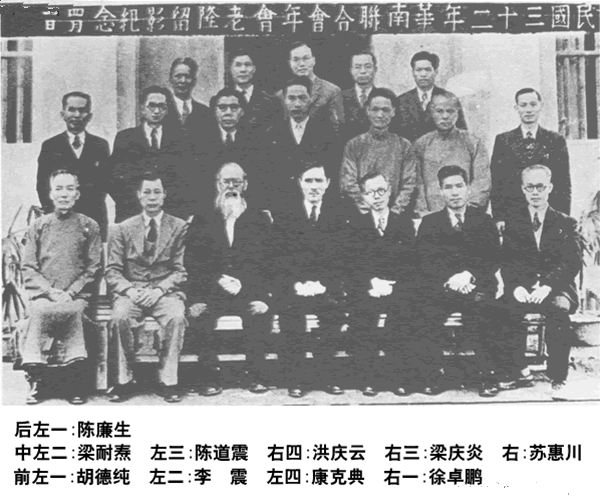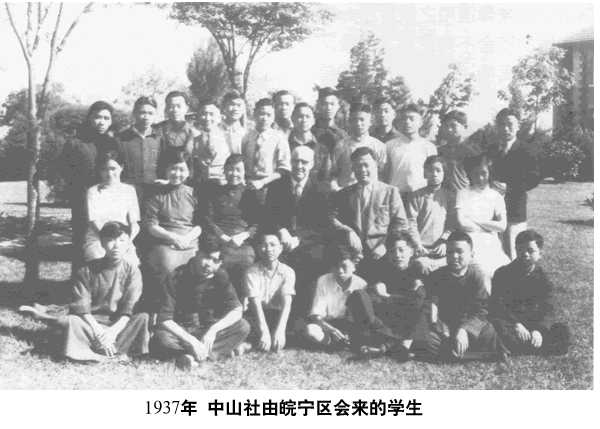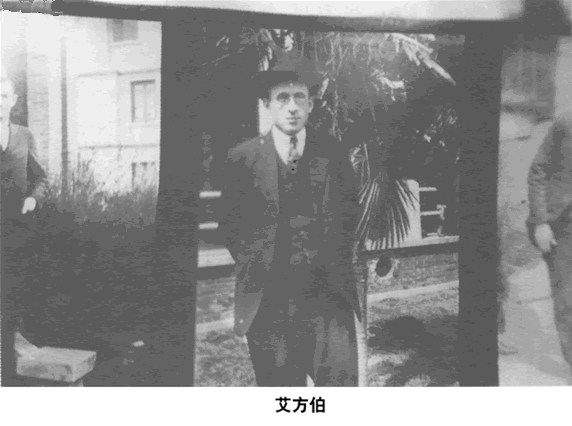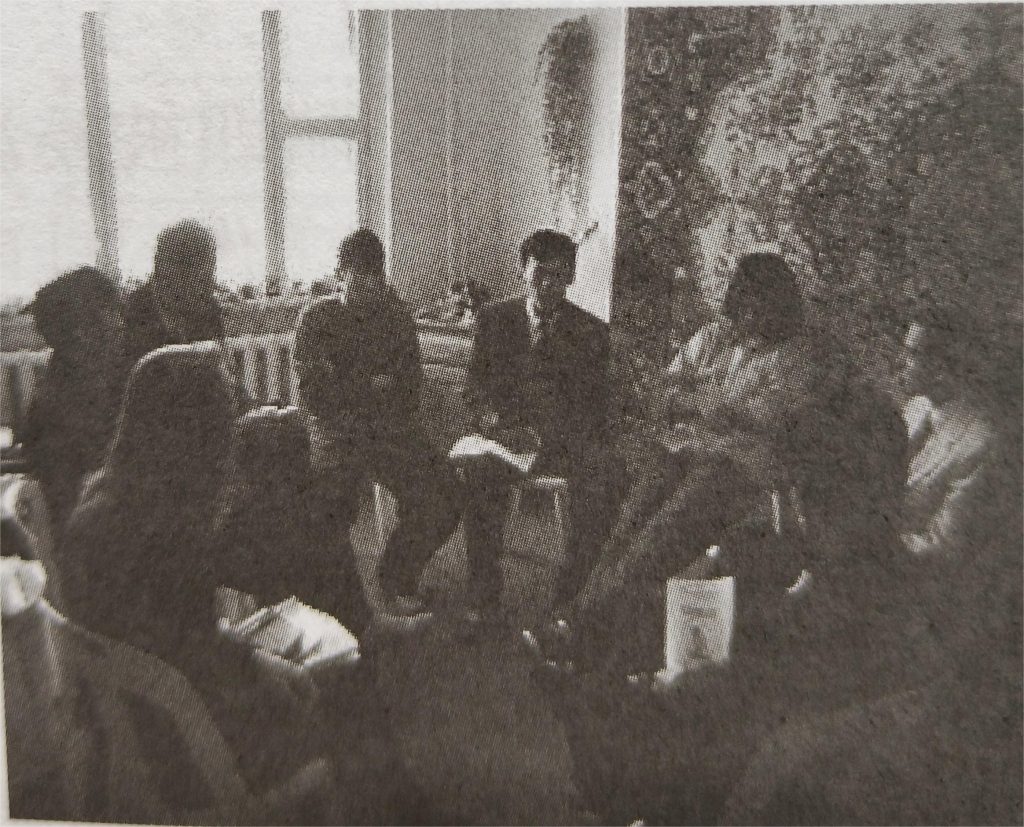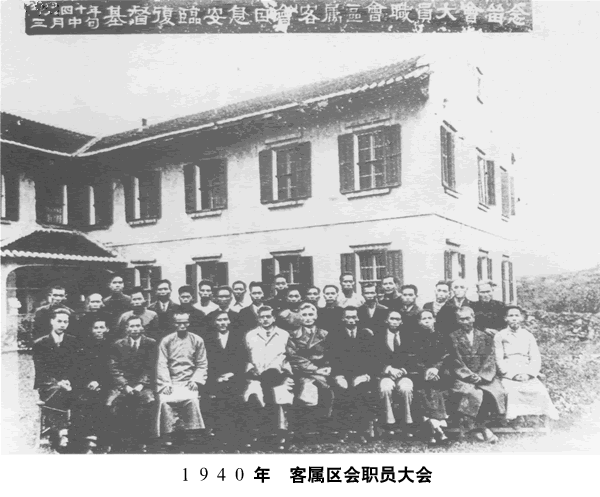A group of Seventh-day Adventists, after experiencing great disappointment in 1844, there were only a few dozen people scattered everywhere. Under the inspiration of the Holy Spirit, they shed tears and prayed earnestly, studied the Bible, and rediscovered the truths of the Sabbath, the sanctuary, and the state of man after death. When the number of believers grew, and legal issues such as legal persons for teaching, production, and production could not be ignored, the Global General Assembly was organized in 1863. By 1873, inspired by the Great Commission of Jesus (Matthew 28:19,20) and influenced by the global preaching movement of the Christian Church at that time, Pastor Andre became the first preacher sent overseas by the Church. Since then, global preaching has become the theme of the Adventist movement.
South China
In 1888, Mr. La Rue, a 65-year-old man with no theological training, went to Hong Kong to distribute gospel brochures at his own expense. For 14 years, he worked alone until 1902, when the preacher Anderson and his wife, and the sister of Teacher Anderson, sent by the General Conference arrived. Soon, Mr. and Mrs. Wilbur joined the Guangzhou-centered preaching team. They opened Bethel Girls' School, Yik Chee School, (later merged into Sanyu School), and trained a generation of preachers and church leaders.
Since then, the church has begun to enter new areas. Dr. Liu Jian has entered Nanning, Guangxi; Emperor Sun has entered Hakka; Guo Ziying, since his student Timothy Guo heard the Sabbath and other important teachings, started the Xiamen holy work. When he went to Guangzhou and passed through Shantou, he studied the scriptures with Hong Zijie.He accepted the sabbath truth. Soon An Lichun went to Xiamen, Nagiri to Shantou, Han Jinsi and An Lichun opened Meihua Middle School in Xiamen, and the work in South China began.
Central China
In 1903, Dr. Miller and his wife and Dr. Shi Limin arrived in Henan. At the same time, Pastor Bi Shengdao also went to Henan to preach. The following year, Han Jinsi and his wife joined, and the following year, in 1905, Wei Depei and his wife also arrived. So far, there are 21 foreign preachers and 64 parishioners in China, belonging to two churches in Northwest China.
Huazhong is the largest parish of the Association in China. There are also the most preachers. There are Helumen, Wei Depei, Han Shangli, Lin Mingzheng, Li Jingguo, Kang Shengde, Kong Zongdao, Wei Liewen, Pastor Bu London and so on. In addition to preaching in Henan, Dr. Miller also set up a medical center and opened a "Taoist medical officer school". During the 1911 Revolution, due to poor public security, he had to move to Shanghai (later Qiaotou Town). At first, the doctors and preachers worked in various places, and then concentrated in Nancheng.
Hunan Shenggong was started by Lai Yide and his wife. In Changsha, they ran schools, distributed books and newspapers, and studied the scriptures with people. Some people believed it. But believers are very hated and falsely accused by relatives and friends. In the future, the missionaries in Hunan went to Hubei. In 1911, they first went by Hulumen and Millerson, and then Jian Moshi, Han Shangli, Li Guojin, Lin Mingzheng and others opened a junior high school in Hankou. The work in Jiangxi has been taken care of by the Chinese since the beginning. After Liu Zhongguang became the chairman, his work has improved rapidly.
East China
Shanghai is the location of the office of the General Conference and the headquarters of the Union. It is the most economically developed city in China. The church has a newspaper, two hospitals, a middle school, a nursing school, etc. Here. The missionary work started with Ms. Mi Chunzhen. In the future, Wu Delai preached the gospel and spread it to other towns in Jiangsu and Zhejiang. The Jiangsu and Zhejiang Conference was established. Later, due to different languages, another conference was established in southern Zhejiang. Wei Gensheng was the president, and the northern Zhejiang area was Hangzhou, with Shi Aide as the president. Anhui Shenggong started in Yingshang County. There is a local self-reliance conference. Han Chong is really one of the founders and a preacher. Pastor Liu Zhenbang sent him a booklet of books and newspapers from Henan. The Holy Spirit moved him to pursue the truth. Pastor Liu and Pastor Hulumen went to the church to study the scriptures with him. Brother Han was determined to observe the Sabbath, and many parishioners followed him. In the future, Pastor Li Precious came here to preach, and Pastor Bi Shengdao also entered Nanjing to work, and later established the Wanning Conference.
The Zhonghua Sam Yuk Research Institute in Qiaotou Town is a staff education institution run by the General Conference, and it is the only school in the country with junior university subjects. After moving from Zhou's family to Shanghai, he moved to Qiaotou Town. Under the leadership of Liang Side, Li Bo, and Liu Pengnian, it has become a well-known working school and a national model.
West China
The North China Shenggong started by Kang Shengde, Bu London, Li Guorui and others. They first went to Shandong to open a school. Kang Shengde continued north and rented a house in Beijing to study the scriptures with others. After that, Li Guorui preached outside Xuanwumen and in front of Tiananmen Square. Many people were baptized. Shanxi work started by Meng Zhongyi and other brothers.
northwest
The work in Shaanxi was started by a newspaper reporter. He heard someone singing hymns in the neighboring room in the hotel. It turned out to be an old pastor Liu Danzhi of the Baptist Church. Under the guidance of Pastor Liu, the newspaper clerk went to the Gospel Village of Sanyuan County to sell books and newspapers and preach the Lord's Way. Later, the three pastors Li Baishui, Shi Limin, and Liu Zhenbang studied the scriptures for the villagers. Pastor Liu Danzhi joined the SDA church and became the leader of the church. From then on, the gospel spread to all parts of the Northwest.
Northeast
In 1914, Northeast Shenggong started by Bai Desun to buy land and build houses in Shenyang, and then bought another land in the suburbs to build a school, and later built a hospital. From 1931 to 1945, Tohoku was under Japanese occupation and called Manchuria. The freedom of the church to work was deprived, but it was God's grace that it continued to progress.
China
Staff
At the beginning of the holy work, there were very few Chinese believers, so the missionary work was mostly conducted by foreign preachers, but soon Chinese preachers joined the work. Lalu had a Mr. Mo who helped him translate and print the Chinese booklet. Principal Guo Ziying is opening new factories in Xiamen and Fuzhou, Hong Zijie is in Shantou, Luo Xinxin is in the Hakka region of Eastern Guangdong, Han Chongzhen, Liu Zhenbang is in Yingshang, Anhui, Liu Danzhi, and Wu Zishan are all pioneers in Shaanxi, Huang Zhendao is in Hubei, Li FaKong's missionary achievements in Sichuan have been very good, and there are many other unsung heroes. It is impossible to describe them one by one. The monopoly of westerners has been reduced a lot by the time of the Pacific War. After 1949, it was reduced to three people. Since 1950, the Chinese people have been completely responsible for themselves, and the foreign economy has also been cut off., And began to practice the principles of three selves (self-supporting, self-propagating, and self-governing), but self-governing can only be implemented at the church level, and the organization of the SDA churches is not allowed at the conference level or above. However, after the implementation of the three selves, the gospel has made rapid progress. In the 1990s, it grew at a rate of 8% to 12% per year. I hope this momentum can be maintained, and if regional coordination can be achieved, the gospel will spread all over the land of China, and the Lord's Seventh-day Adventist is looking forward to it with joy.
General Conference
Organization
The organization of the SDA church was reorganized. During the construction period at the beginning of the century, the number of people was not large, so it was directly under the General Conference. Later, the Asian branch was established. Therefore, the China region became part of the Asian branch (1909-1918) to the establishment of the Far East Mission (separated from Australia and South Asia), belonging to Far East Mission (1919-1930). It was only in 1930 that the Chinese General Conference (Japan, South Korea, and Southeast Asia) was established. Dr. Miller (also Pastor) served as the President until the end of 1952. After 25 years of hibernation, the "Chinese Holy Work" was organized in Hong Kong in 1977. It was renamed the East Asia Committee, the East Asia Association, etc. Several times to coordinate broadcasting and support the needs of the Chinese Holy Work. It was not until 2000 that it merged with the South China Islands Association and changed its name Chinese Union Mission. From 1902 to 1918, when it belonged to the General Conference, it was the period of construction; from 1919 to 1952, when it belonged to the Far East and China Association, it was the period of growth. After hibernation, 1977 has been a regeneration period.Long term.
Review
Looking back on the past century, most of the first 50 years were spent in war, including the danger of travel, the suffering of fleeing, the lack of material resources, and the unspeakable, but the gospel is still moving forward. Foreign missionaries have made many sacrifices and entered the backcountry. They live without electricity, toilets, refrigerators, fans, not to mention washing machines and radios. They wear flagman costumes and braids. The food is rough and they endure the cold and heat. Chinese co-workers have meager salaries and cannot support their families. Unless they have a good wife and mother and are frugal, they cannot support their families. Live the most basic life; when inflation is high, it is more difficult, but in any case, God's grace is enough to enable his loyal workers to stand firmly in their own posts and work for the Lord. In the next 50 years, the Communist Party dominated politics and promoted atheism and evolution. The church suffered hardships in constant political movements, especially in the ten-year Cultural Revolution. In this kind of cold, wind, frost and snow, the church can only hibernate, like fleeing to the wilderness. After 1976, the country implemented the policy of reform and opening up, which also granted the people corresponding freedom of religious belief. As soon as the spring breeze blew, the seeds of the gospel began to germinate and grow again. In just two decades, the number of believers has increased from a few hundred to 350,000, far more than in 1950. In 1950, the number of believers has increased from a few hundred to a few thousand. 350,000, far more than in 1950.Of more than 21,000 people, this is not a human achievement, but the result of the work of the Holy Spirit. Looking forward to the future, the gospel crops will mature quickly and be harvested quickly. The Lord will also come again, and the believers will return to their hometown together.
